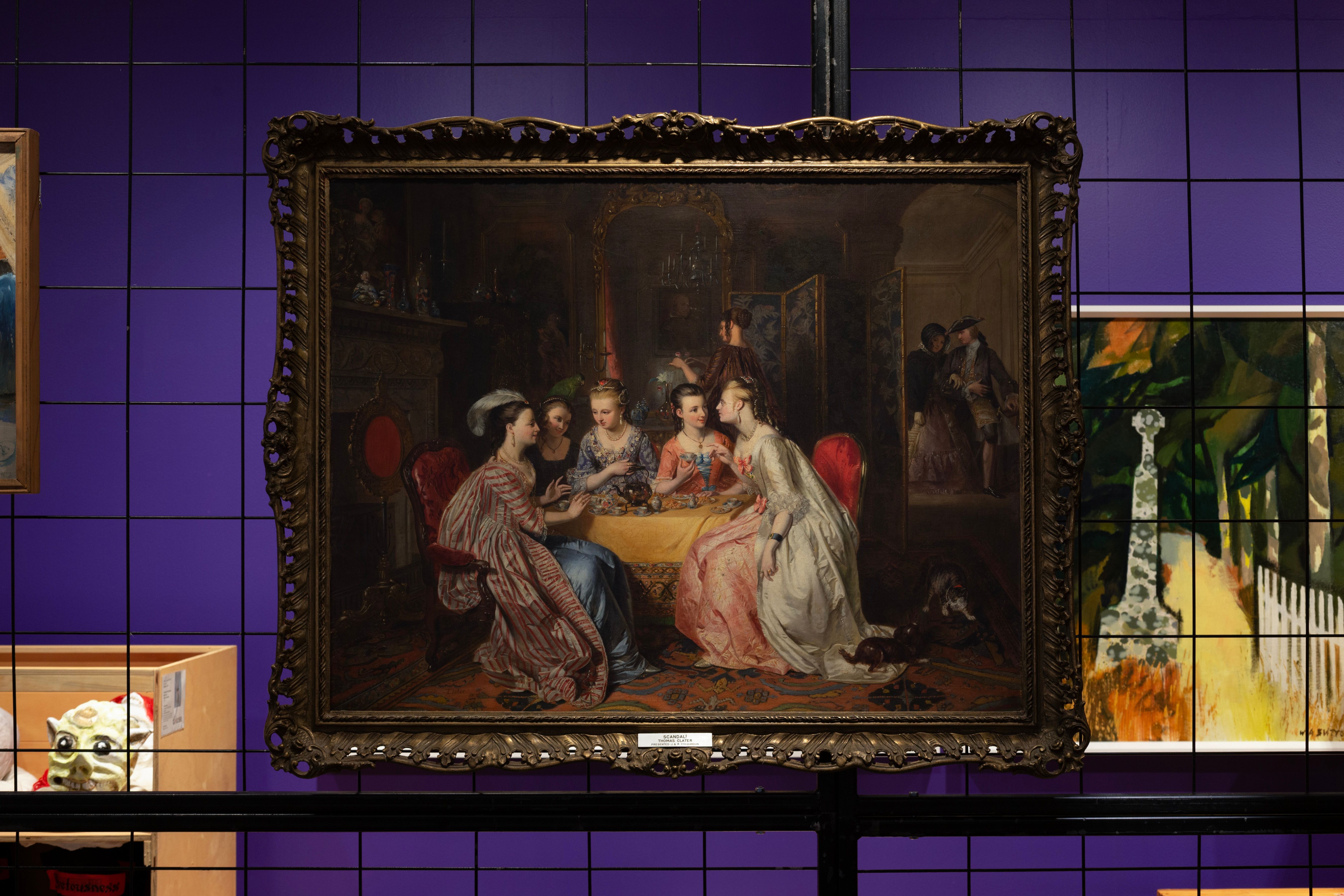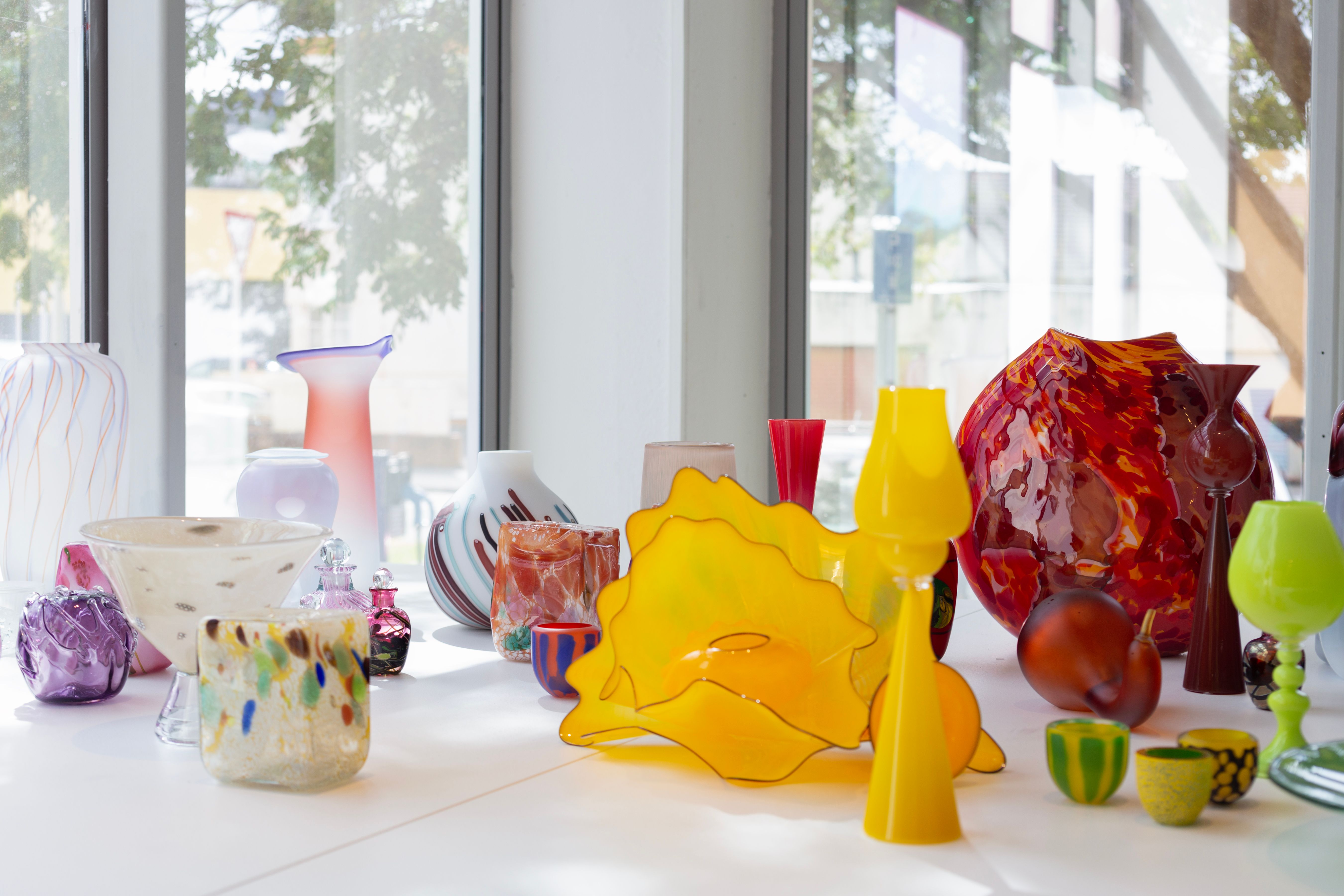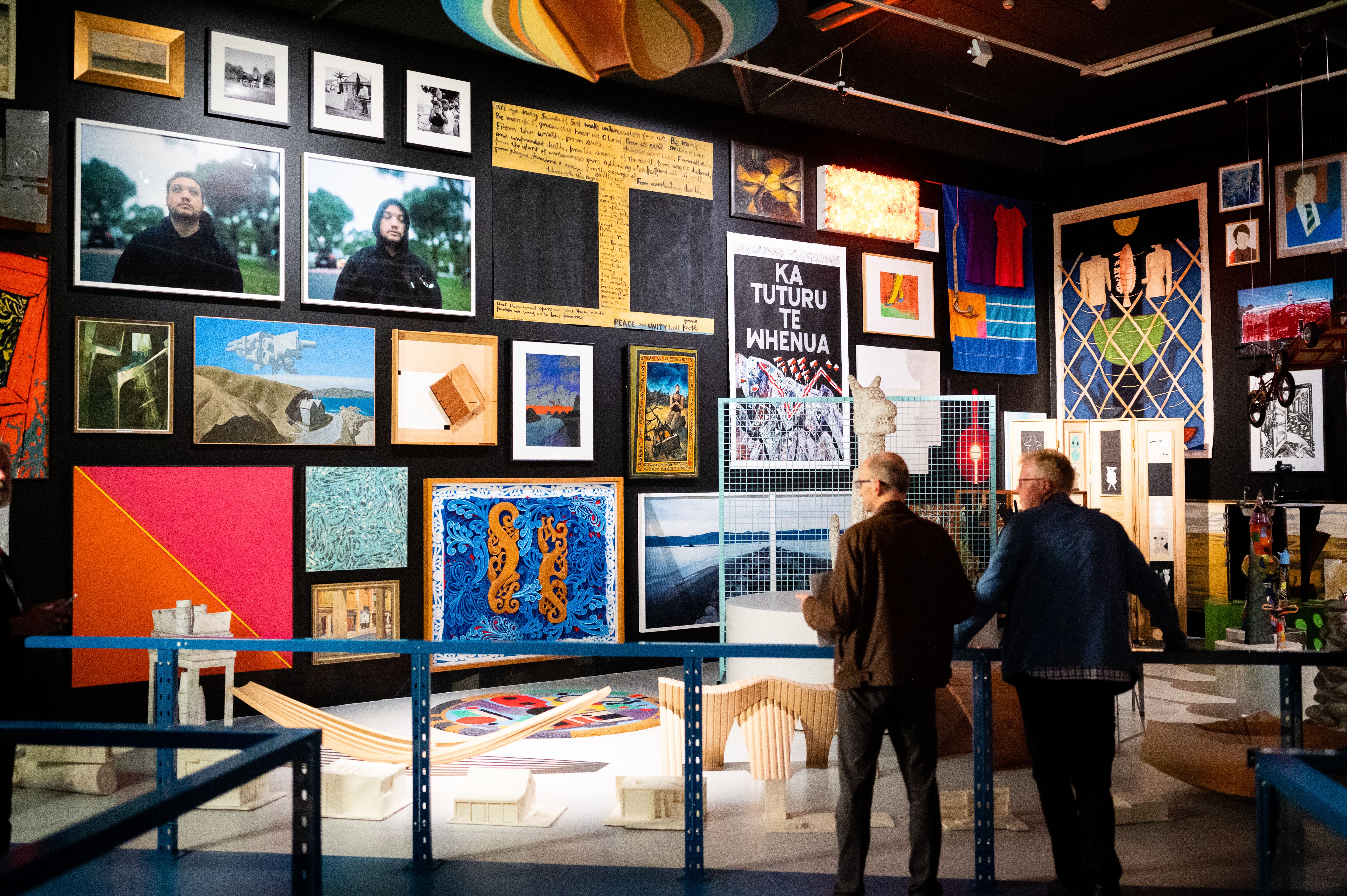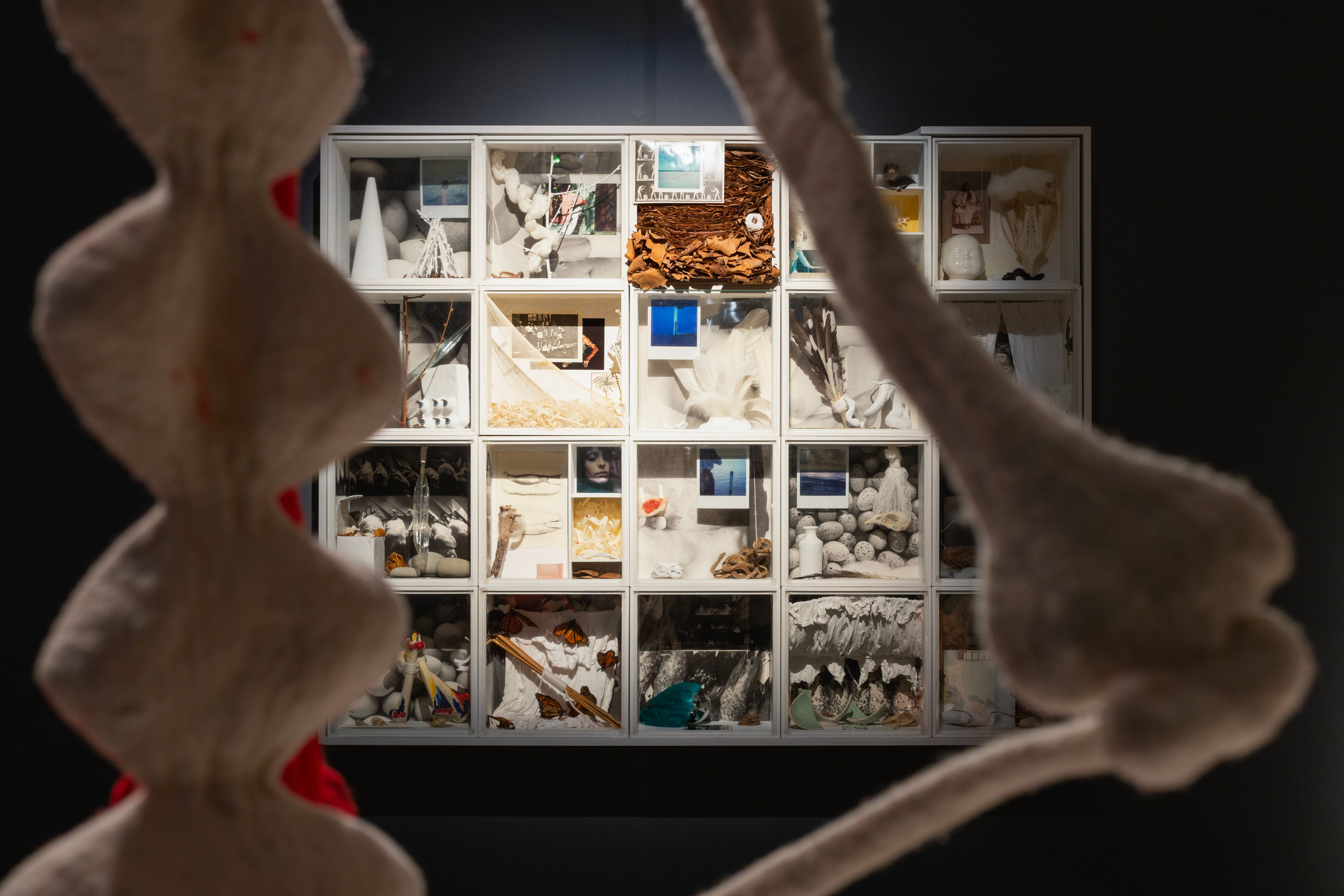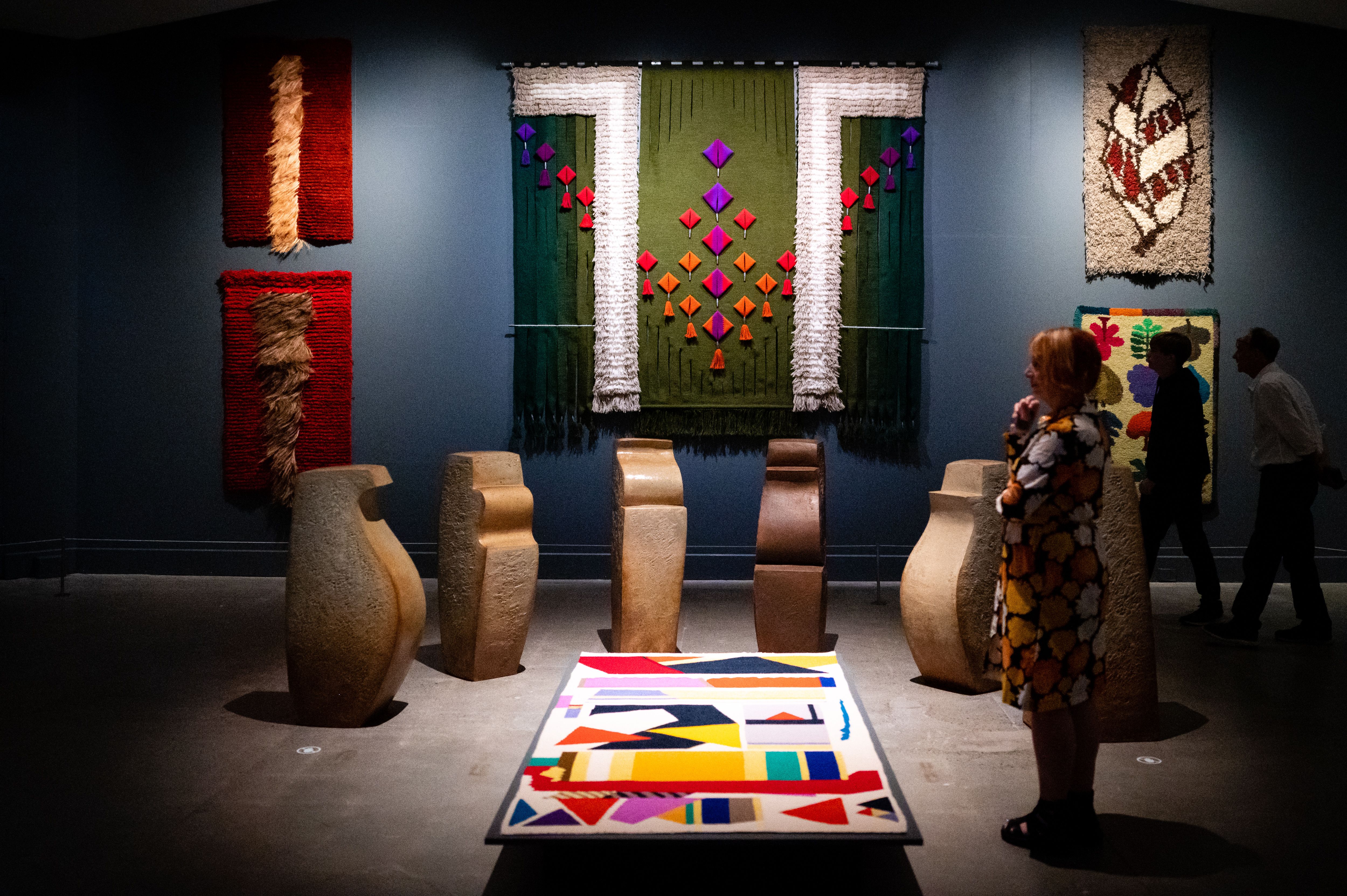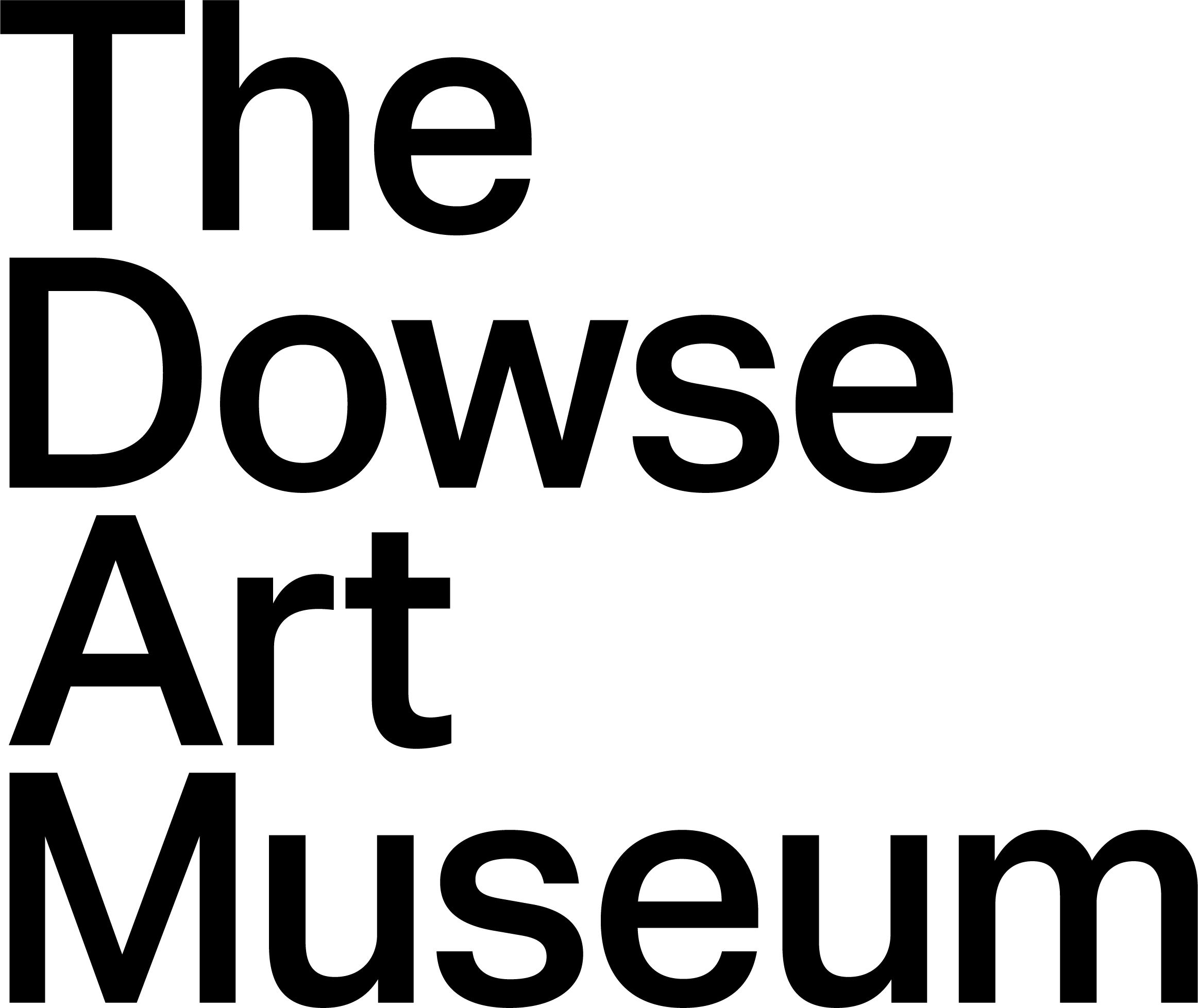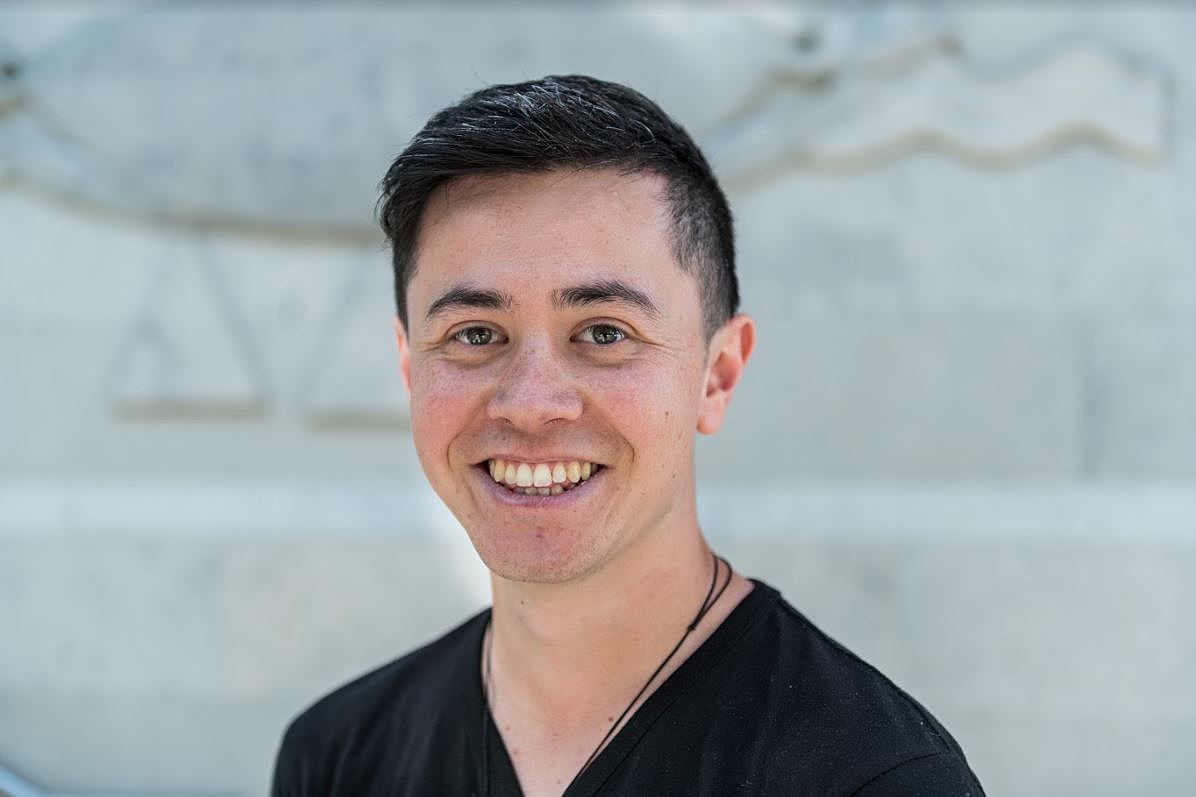Everything is Everywhere
Brook Konia on the exhibition Unhinged: Opening the Door to the Dowse Collection, which features and celebrates the diverse range of art pieces in The Dowse Art Museum collection.
Displaying five decades of collecting, Unhinged: Opening the Door to the Dowse Collection is a chance to peek at over 1,000 items colliding nonsensically but with whimsical relatability across the ground floor of The Dowse Art Museum. The art collection is arranged in eight rooms, revealing the museum’s legacy as one of the leading art institutions in Aotearoa.
Unhinged is an intentional outing during the refurbishment of the museum’s collection storage, one of several major infrastructure renovations in the Dowse’s history. The Hutt Art Society and long-time Mayor of Lower Hutt, Percy Dowse, with his wife, Mary, passionately championed discussions of a gallery in 1963. Established with a gift of 70 paintings from the Hutt Art Society, the Dowse Art Gallery opened in 1971, followed by the museum eleven years later.
The Dowse’s directors and leadership have marked many adventurous milestones as they embraced the radical and the odd that lie at the heart and soul of the local community and the Aotearoa art community’s aspirations. A steadfast determination with an innovative policy to collect fine arts in materials associated with the crafts – those of textile and fibre, ceramic, glassware, jewellery and furniture – has culminated in a legendary public collection of glass, ceramics, adornment and fibre. Promoting the omitted, knowing when to break the rules, and redressing imbalances in the national art-historical record has set the Dowse up as a creative force of edgy contemporary art.
So what has remained constant, and what calls for a bit more curiosity? Like Alice, I fell into Wonderland.
Unhinged installation view. Photo credit: Cheska Brown
In the first room, ‘More Than Just Brown Pots’, 90 percent of the Dowse’s ceramics are nestled in the closed shelving that lines either side of the entry corridor. I look at one shelf. Baye Riddell’s Toa (2022), a human figure, stands unwavering in its rear position. It’s made of light ochre-coloured uku, with recessions in the clay sparingly coloured in a dark pigment. In Bekah Carran’s piece We look and comb our hair [Rock 1] (2020), the artist casts found objects into a mystic balance – discarded jewellery and old pottery scavenged from domestic spaces and junk shops; a metal plate sticking out of forged ceramic work poised with two small pots. The domestic converges on itself, these everyday home objects amalgamate together.
Richard Parker’s Waka (1987), Large Vase (Splotched) (1988), Green and Gold Spotted Vase (1989) and Three Striped Diamond Dishes (1989) are sitting to the left of this shelf. The construction and form of each of these four distinctive works show his playful approach to terracotta. His irregular yet personal style is passionately dashed, dotted and dribbled with glaze. Together, Riddell, Carran and Parker, in their small cabinet window, convey the broad range of practices in Aotearoa ceramics. They are linked by the joy they each take in the medium, and the prowess they display in that joy.
A stunning display of glass works arranged by colour sits by the end windows in natural light. I look at John Croucher’s L’atticino Cylinder, Bowl, and Lily Vase (1986) – refined forms made using a coloured glass-rod technique. Alongside this are Croucher’s son Luke Jacomb’s blown glass goblets, Homage to Giovanni (2019). Mel Simpson’s Vase (1981), with its lustrous purple and soft blue tones, and Green Glass Platter (1985) are on the table, too. Simpson was one of the pioneers of studio glass in Aotearoa in the 1970s. Singing together as an impressive choir, the artists’ names across the table reveal the network of glass makers sought out by the Dowse over the years. These works embody a close relationship to whenua – hands in the mud, fingers sifting through the sand, all forged in heat.
Unhinged installation view. Photo credit: Mark Tantrum
There’s So Much To Share That It’s Time We’re Aware
In the neighbouring space, Unhinged collapses into the multiverse like the Michelle Yeoh movie for which the room is named – ‘Everything Everywhere All at Once’. In orienting myself in the space and looking at the many artworks positioned together, I find synergy in some of the works. These almost reflect the setting they’ve been placed in. This room contrasts drastically with the last room. Previously, the ceramics were ordered on shelves, arranged by colour. In the ‘everything’ room, it gets crazy. Everything is just everywhere.
Debra Bustin’s Model for installation for Adelaide Festival (1984) is a proposed transformation of Adelaide Festival Centre Gallery into an intriguing environmental installation. Her work presents a world of colour and vibrancy using a unique papier-maché technique. A lively and outrageous model depicting theatre and stage, the artwork is an expressionist reflection of the hustle and bustle that can get in the way of creativity and connection with nature. Bustin’s work aims to bring people to their senses – to realise our responsibility to this world and see how precious this life is.
Unhinged installation view. Photo credit: Cheska Brown
Terry Stringer’s Living Room (Screen/Curtains) (1980) plays with perspective to transform home comforts. It includes two armchairs, a table with a lamp, a magazine and a pair of glasses. The objects on the table are foreshortened, resting tilted and defying gravity. Printed shadows reinforce real shadows. Flattened planes achieve a two-dimensional effect. His sculpture’s manipulation of flat planes and the use of paint enhance and extend illusions through optical tricks. Appearing perfectly plausible from one angle, they suddenly reveal themselves as absurdly distorted from another. Terry Stringer’s works celebrate domestic interiors, and suburban living rooms’ litter and clutter, as art.
Cliff Whiting’s mixed-media mural Whanganui-a-Tara (1990) layers customwood over a red background. The customwood is three dimensiona and painted bluel, swirling and billowing like the waves during turbulent winds in Wellington Harbour, not far from the Dowse. In a sinuous motion, swells of white kōwhaiwhai mark out the edge of the work, suggesting the whipped bubbles of seafoam. Twisting in the centre, two wooden figures are the taniwha Ngake and Whātaitai.
I cross the room, walking the designated path fenced between the artworks, humming the tune of ‘It’s a Small World After All’.
A lively and outrageous model depicting theatre and stage, the artwork is an expressionist reflection of the hustle and bustle that can get in the way of creativity and connection with nature.
While We Look Out, We Marvel
In 1974, the Friends of the Dowse commissioned a painting by Toss Woollaston, Port Nicholson, from Korokoro (1979). Woollaston’s intuitive and gestural paintwork releases a gradual vision of the port. Woollaston’s painting hangs in the exhibition space titled ‘A Room with a View’, which displays a salon hang of 60 works from the Dowse’s landscape collection; alongside Woollaston, painters like Nugent Welch, Alfred W. Walsh and John Weeks were also captivated by the light over the land when they painted, rich in the sense of place. It is impossible to see the landscape wall clearly because there is an interior room constructed in front of the paintings; art serves as decor inside the constructed room.
One work within this room is Christine Hellyer’s Thought Cupboard Enhancing (Cabinet) (1983). Hellyer has often lovingly critiqued museums’ approaches to handling found and handmade objects. Originally one of four cupboards, this artwork presents various objects – scrapers, skinny branches with different ends attached, and seven headpieces made of different fibres and furs, all of which are viewable through the glass door of the cupboard. The work combines processed and unprocessed, smooth and rough textures, and transforms mundane everyday materials as well as elements of applied art practice. Hellyer considers what we experience through our possessions. This mode of indoor–outdoor thinking celebrates a connection to the landscape and expands the idea of home. In totality, much like the room it has been placed in, her installation asks the observer to examine the various forms and ideas displayed in her cupboards.
Textile artists reign in the room titled ‘Soft Spot’. Throughout the 1970s, the Dowse established itself as a leader in fibre-art exhibitions, and in 1976 the First National Weaving Award elevated textile art. In 1974, the Friends of The Dowse commissioned textile artist Judy Patience to make a wall hanging for the entrance foyer. Woven from olive-green and earth-toned wools, and embellished with tasselled red and purple diamond shapes, it brought comfort to what was at the time a mostly concrete space.
Unhinged installation view. Photo credit: Mark Tantrum
I admire Erenora Puketapu Hetet’s Contemporary Can Be Corny III (1995), which hangs on the wall, and the five Tuku Mana Whakahaere (1990) in a vitrine. Innovation and transmission are conveyed playfully in her raranga. Hetet’s firm and unshakeable weaving practice pushes boundaries, and you can see this in the corn leaves layered in the same manner as feather plumage would be. She saw the spectrum of materials – those that are organic and connect back to customary weaving, as well as materials and treatments that will stand the test of time, such as waxed linen thread. Hetet’s works really show that spectrum fits with traditional customs and values: ngā tikanga ā koro mā, ā kui mā.
Leave The Light And Travel The Shadowbox
The ‘Shadowbox’ room strips colour from the presentation of the collection. It emphasises the power of form and shape – Peter Robinson’s Black Zero Shift (2005), a chain of reflective black Perspex zeroes hangs from the ceiling, falling into a pile on a raised plinth. Highly symbolic, Robinson’s artwork speaks of Dante’s Inferno and the descent through the layers of hell via one of Stephen Hawking’s theories. Hawking compared the warning “all hope abandon, ye who enter here” at the entrance to hell to that of entering a black hole. Robinson establishes a whakapapa between the scientific lens of the universe and epistemologies, drawing a profound comparison between the materials and signifiers in the hands of the artist, and the innate potential of humans relating to the world and the universe at large.
Taniwha (2019) by Tracy Keith consists of shards piercing out from a rectangular earthen vessel. I see three blue marbles growing out of the scorched ceramic. At the top, where the vessel opens, lie three sharp lengths. This work reveals to me the importance of protecting and honouring our connection to the land. Our memories and experiences in nature are diverse and unique, bringing visual energy and organic responses that cannot be replicated elsewhere. In Keith’s practice, I see a dance between caution and experimentation. In titling this work Taniwha, the shapeshifter of guidance and warning, it proclaims: Respect our whenua, honour Papatūānuku, should you go ahead and reach into the vessel again, you may be pricked.
Unhinged installation view. Photo credit: Cheska Brown
An exhibition that is a whole museum collection is a sight to behold. ‘Collection of Conundrums’, ‘Into the Void’, ‘The Enchanted Garden’ and ‘The Breathless Zoo’ are other rooms in the exhibition to explore. Unhinged demonstrates a commitment to the pioneering presentation of art forms and artists. It is crowded, but that is the point. This necessary layout makes it accessible – people can see the museum’s holdings simultaneously, which runs counter to the usual practice of thematically curated displays. Unhinged is a glimpse of history through art, collected by the forces that were and are. Opening boxes, seeing artworks, checking them all and thinking about their care prompts questions about who is missing and who else should be counted.
The artworks across Unhinged share a sensitivity to land, as well as an innovative and indomitable spirit to challenge materials and mediums. Unhinged bursts with pride in telling the stories of the Dowse art collection. Artists’ works are seen. Collected. Celebrated.
